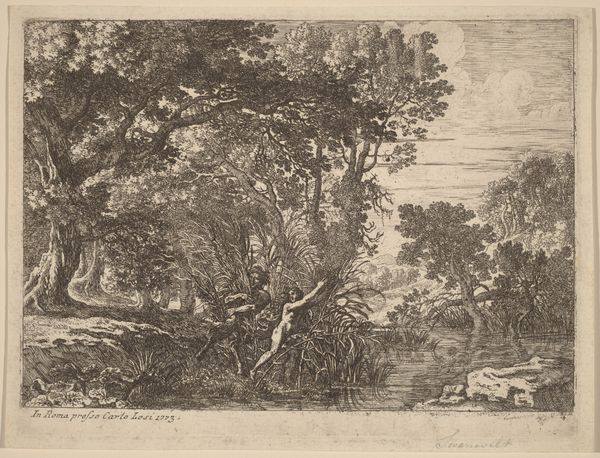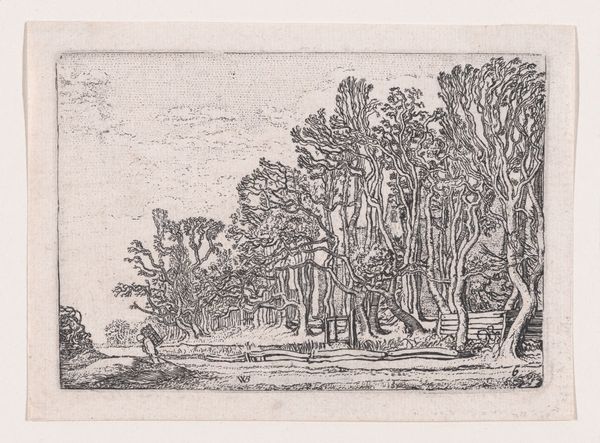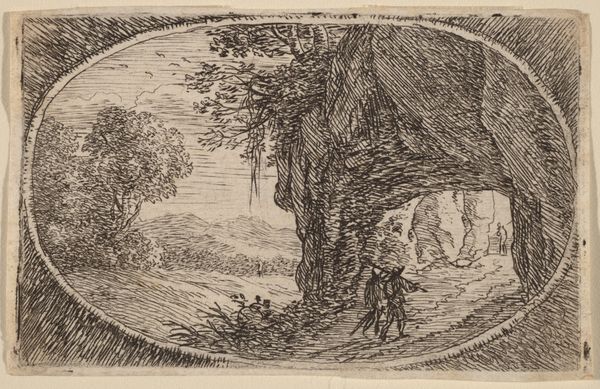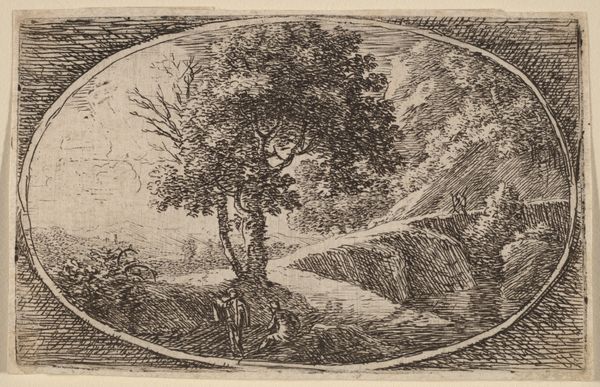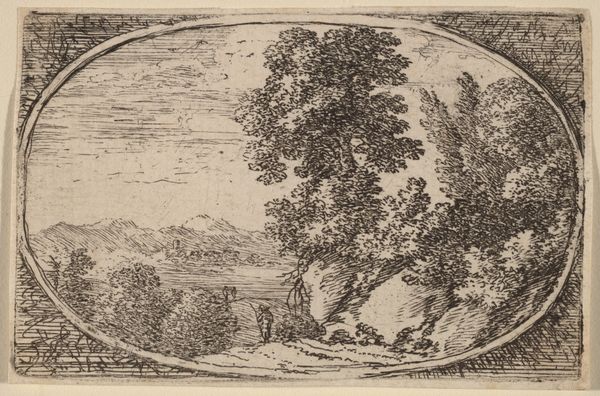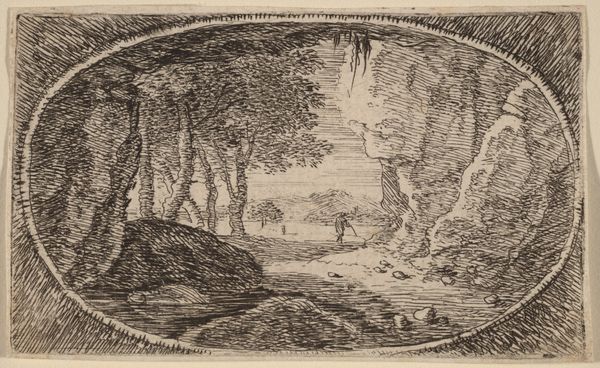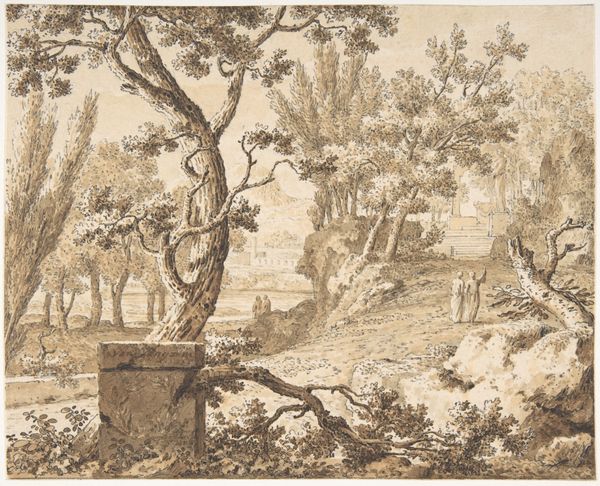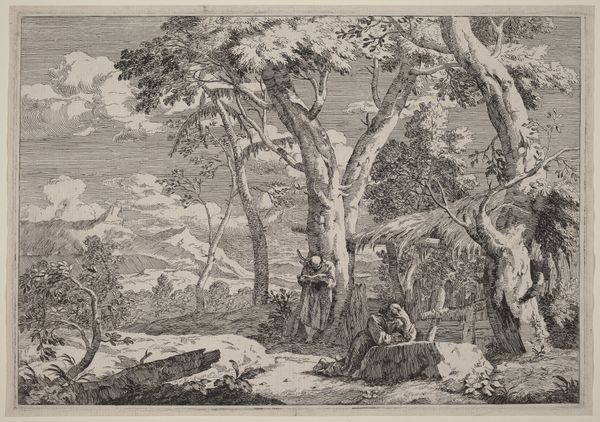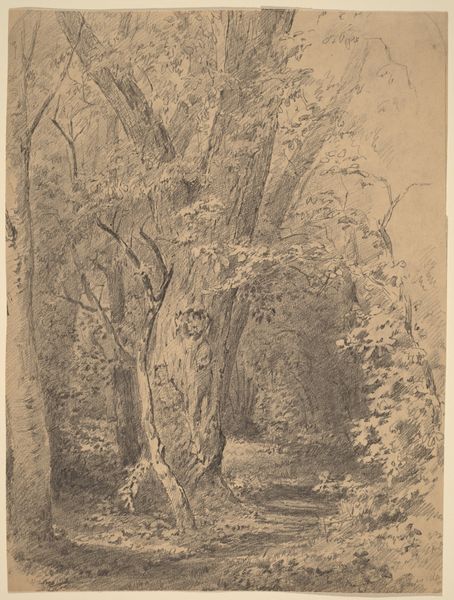
print, etching
#
ink drawing
# print
#
etching
#
landscape
#
history-painting
Copyright: National Gallery of Art: CC0 1.0
Herman van Swanevelt created this etching, *Temptation of Christ*, using a metal plate, acid, and ink. Etching is an indirect process, involving an acid bath to bite into the metal where the artist wants the lines of the image to appear. The controlled removal of material is key here. Swanevelt would have carefully applied a waxy ground, then used a fine needle to draw through it, exposing the metal. The plate was then immersed in acid, which bit away the exposed lines. This time-consuming method contrasts sharply with the seemingly spontaneous quality of the final print. Notice how the density of lines creates areas of shadow and depth, particularly in the foliage and the distant landscape. The artist's labor is evident in this intricate detail. This highly skilled and technical method, contrasts with our modern-day expectations about artistic labour. Yet, understanding how this print was made helps us to appreciate the artistry involved, and to reconsider the value we place on craft and its processes.
Comments
No comments
Be the first to comment and join the conversation on the ultimate creative platform.

